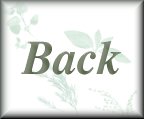

| For the better part any of these herbs, or a combination of them, will take care of the most pressing problems that may arise, and they are a must in any herbalists cabinet. First, Iíll give you a quick reference, and when that piqued your interest, you can scroll down to the individual 'Formula' pages. |
Anaesthetic, antiseptic, expectorant, germicide, astringent |
Antiseptic, analgesic, emmenagogic, rejuvenative, astringent, expectorant, antifungal, antibiotic, and antispasmodic. |
High concentration of allantoin, a cell proliferant stimulating growth of connective tissue and cartilage. |
Antiseptic, antibacterial, antifungi, antiviral. |
Astringent, hemostatic |
Astringent, diuretic, expectorant, draws out toxins |
Olive tree leaf: Antibiotic Chickweed: Drawing qualities (puss, abscess, splinters) |







 † † †
† † †
